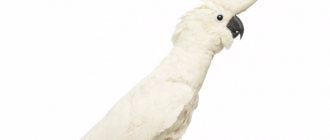Looking at the photo of the hedgehog, you will see how cute and unique this animal is. A hedgehog is an animal of the hedgehog family. It lives in European, Caucasian, Ural steppe and forest-steppe zones. In the vastness of the Taiga and the desert you can meet this animal in search of food. Hedgehogs are comfortable living on the edges of forests in bushes or near meadows. Let's take a closer look at where and how the hedgehog lives.
Description of the animal
A hedgehog is a small animal that feeds on insects. Its weight can reach up to 1.2 kg, and its length can be 20 centimeters. Most often, males are slightly larger than females. The hedgehog's muzzle is elongated and quite large.
The animal's eyes are small and lack the ability to see normally. But, in return for vision, the hedgehog is endowed by nature with excellent hearing and sense of smell. There are small ears on the top of the hedgehog's head, and short whiskers near the nose.
For ease of movement, its hind legs are slightly longer than its front legs. The hedgehog has thirty-six sharp teeth and long nails on each of its five fingers. These are his tools that allow him to get his food.
Hedgehogs' home
Hedgehogs are nocturnal animals and during the day they feel comfortable in a hole. They organize nests under the root systems of trees, in bushes, depressions and abandoned burrows of other animals.
The hedgehog's home is modest in size and usually does not exceed 20 centimeters in diameter. They line the bottom with moss or dry leaves. In its burrow, the hedgehog not only settles down for the night, but also cleans its needles and licks its paws and belly.
Varieties of domestic hedgehogs
There are many types of hedgehogs on the planet. They all differ: in habitat, size, weight, length of spines, how much spines cover their body, and slight differences in appearance. Domestic hedgehogs can be divided into only two varieties: domesticated wild ones and artificially bred ones for keeping in people's homes.
Among the former, two species are especially common as pets:
- Common (European) hedgehog - this type of hedgehog is common in Europe and Asia. They grow on average from 20 to 30 cm and weigh 700-800 grams. Not only their spines are sharp, but also their teeth. It has an elongated muzzle, small ears and a constantly wet nose.
- The long-eared hedgehog lives in the deserts and dry steppes of the Middle Eastern countries, Central and East Asia, and in some steppe regions of Russia. They are distinguished from “ordinary” hedgehogs by the presence of elongated ears, which can reach up to 5 cm, a small body measuring from 15 to 27 cm, and weighing from 200 to 500 g.
Nutrition
What do hedgehogs eat? The main diet of animals is plant food. Hedgehogs have priority:
- Beetles.
- Little frogs.
- Small lizards.
- Worms.
- Mice.
- Small insects and their larvae.
- Snails.
- Slugs.
- Eggs of some birds.
- Only newly born chicks.
The unique structure of the jaw allows hedgehogs to chew through rough food. In addition to living creatures, the hedgehog eats tree fruits and berries. Living in captivity, this small animal can eat milk, baked goods, apples, meat and cereal porridge.
Lifespan
The question of how long domestic hedgehogs live is very important. Although nature has given these little ones 10 years of life, the little ones in captivity are not destined to live to that age.
Hedgehogs usually die at the age of 5 years with good care and feeding. There are also animals that are long-lived and go beyond the eight-year mark, but this is the exception rather than the rule.
Reproduction
The mating season for spiny animals begins in early spring, immediately after hibernation and complete saturation. As with many other animals, males fight for females by hissing at each other and using quills in the fight.
The female produces offspring only once a year. The number of small hedgehogs usually does not exceed 5 pieces. The female carries hedgehogs for 49 days. Hedgehogs are born blind and bald.
Note!
Ultrasound for animals - why is it needed?Miniature pinscher (miniature pinscher): description and characteristics of the breed, maintenance and care
Orangutan - lifestyle, description, environment and habitat. Abilities and characteristics of primates (115 photos)
A few hours after birth, soft needles appear on their body, which harden after a few days. Within a month, the cubs receive mother's milk for food, and then learn to eat normal food.
The photo of the hedgehog evokes nothing but tenderness. It is not for nothing that these cute little animals are often kept at home, despite their usual way of life. In captivity, a hedgehog lives in a cage and eats human food. The average lifespan of a hedgehog is 5 years.
Care and maintenance
Spiny babies require large areas to live in - a hedgehog cage must be at least 80 cm long.
To express activity, the hedgehog will need to purchase a wheel. It is desirable that its surface is solid - this way the animal’s paw will not get stuck between the bars.
There must be a house in the cage - a shelter from which the hedgehog cannot be pulled out by force. Typically, such houses are sold in stores and are made of plastic. Also be sure to install a stable waterer and feeder.
Cat corn litter is best suited for filling the cage - it absorbs odors well, has an optimal structure and is safe for prickly predators.
Daily walks of the animal outside the cage are required. The main thing is not to lose sight of him, otherwise he will find the darkest and most inaccessible corner in which you will have to look for him for a very long time.
Be sure to visit a veterinarian once every six months for a dental examination and cleaning.











